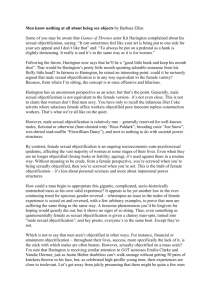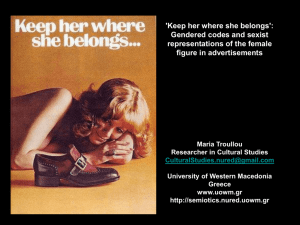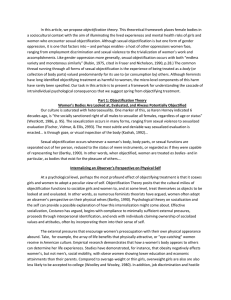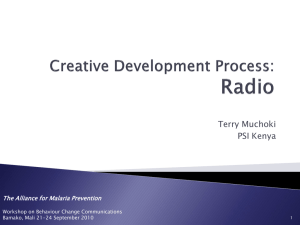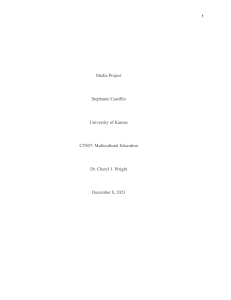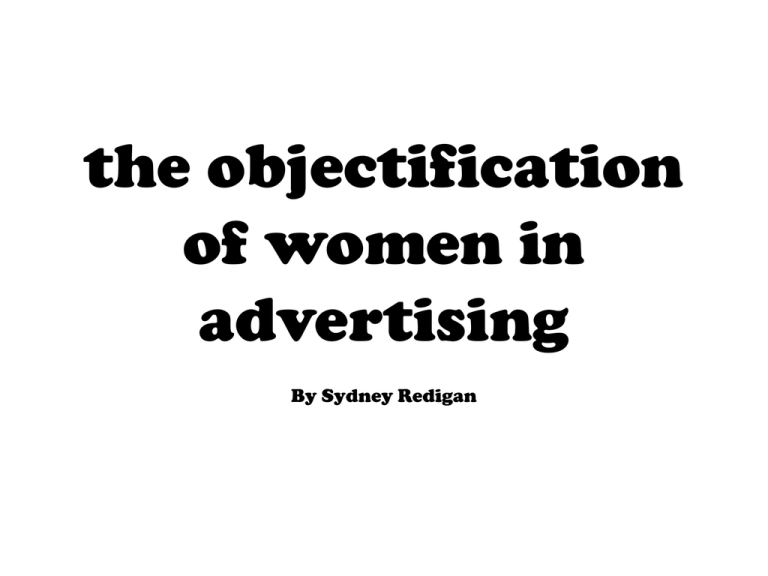
the objectification
of women in
advertising
By Sydney Redigan
what is objectification?
“objectification is making into an
object one who is not an object but a
person. this is done by conferring the
properties of an object onto a person.
making someone into something.”
– Sam Hawkins, University of Illinois at Chicago
why we’re focusing on advertising
an average American sees 3,000 ads
per day
media, such as ads, shape the way we
think and behave, individually and
as a society
advertising’s influence isn’t always
obvious; it mostly affects us on a
subconscious level and over years
of exposure
body as object
body compared to object
dismemberment as
objectification
objectified as food
objectified as animals
objectification of men
“what affects us is not our
experience of any one ad, but of
the totality which represents
certain kinds of messages again
and again.”
– Stuart Ewen, historian and media culture critic
how women see
themselves
women internalize the idea that they are an object
to be looked at and may begin to view themselves in
a similarly detached, critical way
dismemberment ads leave many women feeling
that their entire body is “spoiled” on account of
one less-than-perfect feature. they view
themselves as “works in progress” or something in
need of constant alteration
extensive research shows that once they begin selfobjectifying, many young women fall prey to
depression, appearance anxiety, body shame, sexual
dysfunction and eating disorders
how men view women
media images of women influence everyone.
they influence how women feel about
themselves and influence how men feel about
the real women in their lives
for example, a recent study by Princeton found
that images of scantily clad women activated
men’s brain regions associated with objects or
“things you manipulate with your hands”
the negative and distorted image of women in
advertising affects not only how men feel about
women, but also how men feel about anything
labeled “feminine” in themselves
societal effects
so much of our reality is shaped by media images
such as ads that these portrayals of women have
potentially serious societal effects
they legitimate such violent acts as domestic
abuse and rape through their dehumanizing
power
because images of objectified women are so
prevalent and influential, they suggest that
advertising’s portrayal of women is an accurate
reflection of reality
how to be media literate
recognize how media messages have the ability
to influence and persuade us
think critically about media messages to
uncover underlying messages and values
understand how things we see and hear can
lead to stereotyping, desensitization and
objectification

